Clicking on most pictures will show a larger version
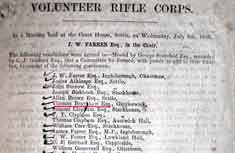 Formation of the Settle Rifle Corps
Formation of the Settle Rifle Corps
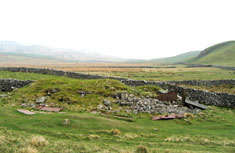
The remains of Attermire rifle range

Metal protective target plate
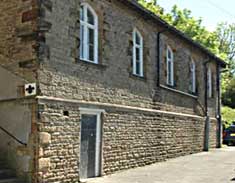
Settle Drill Hall
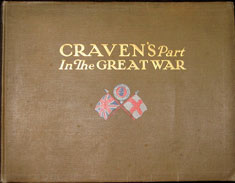
Craven's Part in the Great War - Roll of Honour paid for by Walter Morrison
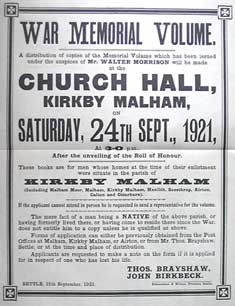
Poster advertising the presentation of
"Craven's Part in the Great War" for the parish of Kirkby Malham.
Walter Morrison
"A man of many parts"
Military Man
Another aspect of Walter Morrison’s life totally in keeping with his beliefs in patriotism and loyalty, was his lifelong support for the military and the defence of the nation. His involvement in the military had started at an early age at school when the pupils were drilled by an old soldier and he had learned how to perform simple military movements. In later years, one of his favourite hobbies was the study of military campaigns.
After taking over the Malham Tarn estate, one of his first involvements in the area was the formation of the North Craven Volunteers. In 1859 when tension was running high between Britain and France and hostilities looked likely, the Secretary of State for War contacted the Lord Lieutenants of counties, permitting them to form Volunteer Rifle Corps. Settle responded immediately and an inaugural meeting was held on July 6th 1859 at the Settle Court House. This resulted in the formation of the North Craven Rifle Corps with Walter Morrison and John Birkbeck as Secretaries. Volunteers were expected to pay for all or at least part of their equipment, £3 8s 0d for a rifle and £2 1s 0d for the uniform. Other expenses would be borne by subscriptions from honorary members.
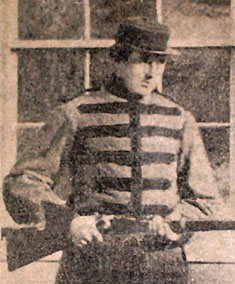
Walter Morrison in his Volunteer Corps uniform
Under Walter’s auspices the Group quickly grew and by the end of the year there were around 40 active members, 15 honorary members and a band of 16. Walter was appointed Lieutenant and by 1860 the rifle range at Attermire had been built, a wonderful range the remains of which can still be seen today. The range was used for target practice and for competitions right up until the outbreak of war in 1914.
It was Malham Tarn Estate however, which was used as the venue for a shooting match in 1860, with the Settle, Ingleton and Skipton groups competing for a silver bugle donated by Walter Morrison. It must have been a wonderful sight with 60 men from Skipton marching with their band from Bell Busk station, joined by 40 men from Settle with their band, and the competitors from Ingleton, all in grey and scarlet uniforms, and all the onlookers, making their way on foot to Malham Tarn House. Morrison as host provided the venue and prizes, lunch and tea, a sure sign of his commitment to the Volunteers. He must have been proud of the fact that the North Craven marksmen won the bugle.
Drills were held twice a week in the meeting room at the Joiners’ Arms until he paid for the building of the Drill Hall in Settle for practice and for a social meeting place for the Corps. Walter became the Major Commandant and in 1865, Lieutenant Colonel, even going to the School of Musketry at Hythe for instruction in order to better fulfil his role. He passed on command in 1867 but remained an honorary member throughout his life.
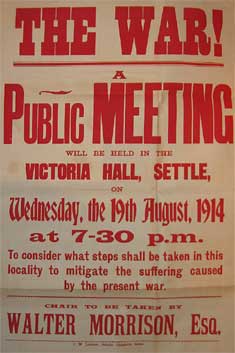
The Volunteer Corps existed for 49 years and became a popular institution in the locality with shooting matches a regular event, and reports of their activities appear in the Settle Chronicles of the time, but in 1908 they ceased to exist and were re-formed as the Territorials who were mobilised at the outbreak of WW1. Again Morrison was at the forefront of benefactors and gave £1000 to equip the regiment with shirts, socks and boots ready for service. Despite being nearly 80 and not in good health, he worked tirelessly throughout the war attending war charity sales, recruiting meetings, fund raising meetings for hospitals, relief funds, in fact anything where he felt his presence was needed. His donations were always prompt and large. He was doing his duty in the only way he was able.

By the end of the war he was in very poor health but he made one final gift to thank all from the Skipton Parliamentary Division who had ‘answered the call of duty’. The gift took the form of a book entitled ‘Craven’s Part in the Great War’, which was to be presented to every ex-serviceman or to the family in the case of men who had been killed. The original idea was to have details of all the men who had served in the war, but this proved to be an impossible task, so it became a memorial book which listed the facts, mostly with photographs, of over 1500 men who died and also contained an article entitled ‘Craven in Flanders’, the war record of the 1/6th Battalion of the Duke of Wellington’s (West Riding) Regiment which had absorbed the Craven Territorials. The material was compiled by John Clayton, Editor of the Craven Herald, and the trustees alongside Walter Morrison were John Birkbeck and Thomas Brayshaw.
Each area had its own presentation of the books and the one for Malhamdale took place on Saturday September 24th 1921 when Morrison unexpectedly turned up to make the presentations. He was too frail to get out of his car and it turned out to be his last public appearance as he died in December of that year. It seemed quite fitting that it should be his last task, thanking the men in the Dale he loved for fighting for the country he loved.